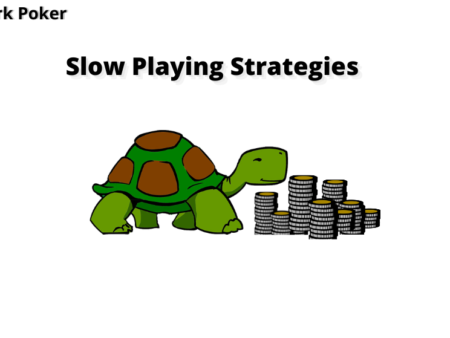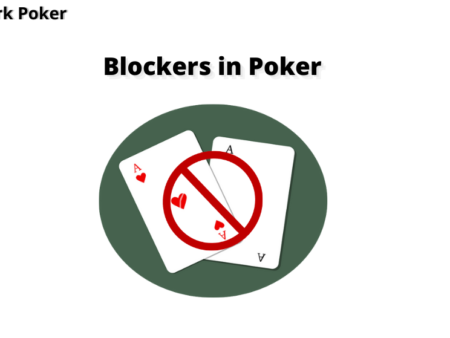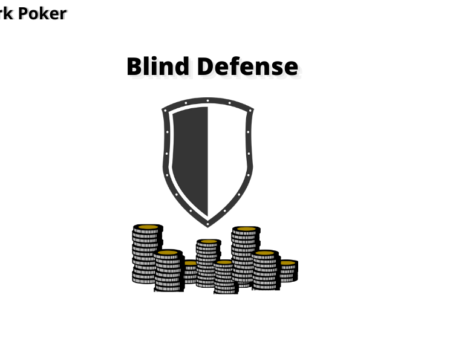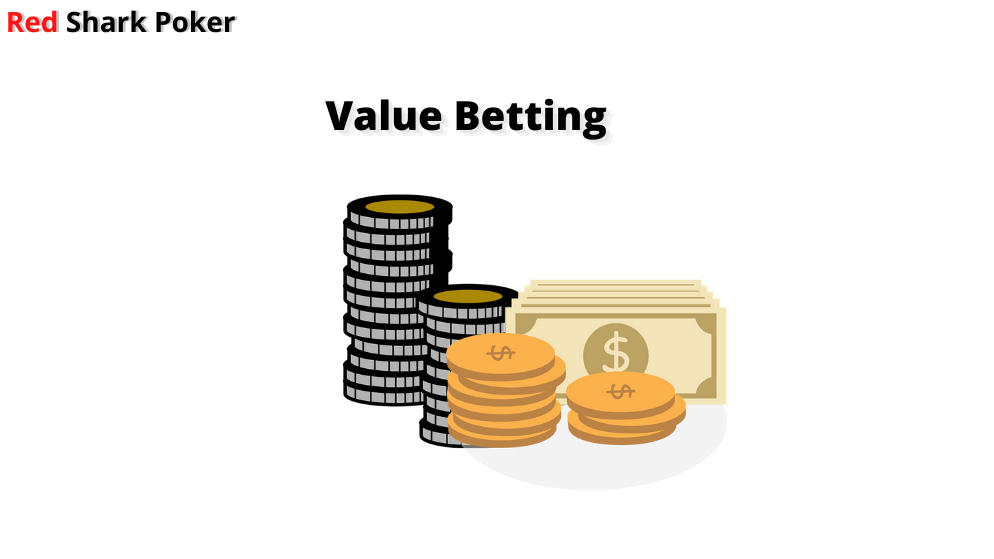
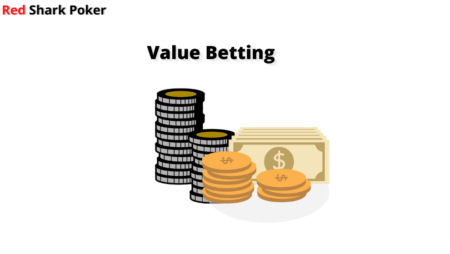
Let’s be honest! It is really difficult to connect with the board. In fact, you hit the flop only 1 out of 3 times – That’s only 33% of the times. If you connect with the board and believe that you have the best hand, won’t you try to win as much money as you can? Definitely, yes! This is where the concept of value betting in poker comes in.
The main objective of playing poker is to minimize your losses and maximize your profits. If you have an opportunity of making profits with the best hand, won’t you build a bigger pot by betting? This form of betting with the best hand is called value betting in poker. In other words, you are looking for value or extracting money from your opponent to make maximum profits.
What is Value Betting in Poker?
Value betting in poker is betting for the sole purpose of extracting money from your opponent when you believe that you have the best hand. When you believe that you have the winning hand, the best strategy would be to extract maximum money from your opponent. In order to maximize the value of your hand, you need to bet, raise or re-raise when it’s your turn to act.
As you have noticed, we are using the word “believe” here. This is because you can never find out your opponent’s hand before the showdown. You can only believe what hand your opponent is holding based on his playing style and the experience of playing with him. Only in the case of a nut hand like holding a nut flush or quads, you can be sure that you have the best hand.
For example, a tight-aggressive player raised preflop from UTG, and you call from the small blind with 8♠ 8♥. The flop reads 2♥ 6♠ 8♦. Here, you can value bet as you believe that you have the winning hand (set) against your opponent’s top pair, weaker hand or no-made hand.
How is Value Betting Different from Bluffing?
Both value betting and bluffing involve betting or raising. The difference is what type of a hand do you have? Do you have the winning hand? Or do you have the losing hand?
Value Betting: When you believe that your hand is stronger than your opponent’s, your bet will be considered as a value bet. You will be value betting to extract money from your opponent.
Bluffing: When you believe that your opponent hand is better than yours, your bet will be considered as bluffing. You will be betting to force your opponent to fold.
Answer this question, “Do you have the winning hand?” to find out if you are value betting or bluffing. If the answer is yes, you are value betting. And if the answer is no, you can choose to bluff.
Read: Reasons to Bet in Poker Post-flop
Why Value Betting is Important in Poker?
A common beginner’s mistake is checking with a strong hand, hoping that the opponent will bet and then you will raise. This move can be disastrous if your opponent improves to a better hand on the next street. Also, you could be missing out on value on the current street if your opponent also checks back. So, the best strategy is to value bet most of the times when you have the winning hand.
Let’s look at an example where checking can prove to be very costly. You hold A♣ K♠ on A♥ T♣ 3♥ flop. You have the top pair and top kicker. If you check and your opponent also checks, you have missed out on extracting value on the current street. If the turn reads A♥ T♣ 3♥ T♥, your opponent will beat your top pair top kicker if he has a Ten or if he has completed his flush draw. You not only missed out on extracting value on the flop but also made your hand very vulnerable. If you bet on the turn and face a big raise from your opponent, you might have to fold your hand.
Value betting also helps your table image. If you win a pot at showdown by value betting on previous streets, it will boost your image as a serious player who doesn’t bluff while betting. When you establish this image, you can easily bluff as your opponents will think you are value betting.
When to Value Bet in Poker?
You must believe that you have a better hand than your opponent. You can only “believe” that you have the best hand as you cannot see your opponent’s hand before the showdown. However, the common situations where you can be confident of value betting in poker are as follows:
Top Pair: A top pair on the flop is a good spot to value bet in poker. Your top pair has the potential to improve to trips or two pairs till the river. There are five outs in the deck that can help your top pair to improve. A top pair with a top kicker is even better. If your opponent also has the top pair, your kicker will help at the showdown.
Two Pairs: Two pairs are very disguised hands that can help you to extract a lot of value. If your two pairs are up against your opponent’s top pair, you can comfortably value bet. Also, there are four outs that can improve your two pair to a full house. However, don’t overbet your two pairs as it will make your hand very obvious.
Set or Trips: Playing with pocket pairs and hitting a set on the flop is one of the best feelings ever. Your opponent will have no clue about your set. Value bet comfortably without overbetting and play it as a disguised hand. You still have seven outs that can improve your set to a full house or quads. Trips, on the other hand, does not give a lot of value. It becomes very obvious to your opponent when you bet with trips.
Against Draws: If you have a pair on a wet board that has a flush or straight draw, know the type of opponent you are up against. If you are up against an experienced player, who is most likely to be tight-aggressive, make a full-size pot bet to force your opponent to fold. Expert players have a mathematical approach and will fold to tough pot odds. And if you are up against an amateur or a fish or a LAG, you should make a small value bet. They are more likely to call whatever amount you bet. So, go to the next street as cheaply as possible, and if he misses his draw by the river, you can confidently value bet a larger amount.
Value Bet Sizing in Poker
You must have realised the importance of value betting after reading this far, but the important question is – How much to Bet? Well, there is no fixed answer. The sizing depends on how likely will your opponent call your bet. If you have a rough estimate of your opponent’s calling percentage, you can size up your bet accordingly.
Let’s look at an example: You are playing a $10/$20 cash game with a full stack of $2000. Let’s see how your profit gets affected by different bet sizes when you use your opponent’s call percentage.
Opponent’s Call Percentage: 80%
| Bet Size | Opponent’s Call Percentage | Profit (Bet X Call%) |
| $50 | 80% | $40 |
| $100 | 80% | $80 |
| $200 | 80% | $160 |
Opponent’s Call Percentage: 50%
| Bet Size | Opponent’s Call Percentage | Profit (Bet X Call%) |
| $50 | 50% | $25 |
| $100 | 50% | $50 |
| $200 | 50% | $100 |
Opponent’s Call Percentage: 25%
| Bet Size | Opponent’s Call Percentage | Profit (Bet X Call%) |
| $50 | 25% | $12.5 |
| $100 | 25% | $25 |
| $200 | 25% | $50 |
Things to Observe
- If the calling percentage is big, you should bet big to make more profit.
If your opponent calls 80% of the time, you can be making a profit of $160 with a big bet of $200. If you make a small bet of $50, you will be making a profit of only $40.
- If the calling percentage is small, you should bet small to make some profit.
If your opponent calls only 25% of the time, a big bet of $200 gives you a profit of only $50. Your opponent will most likely fold to your big bet too. So, it is better to bet small and expect some profit than not making at all.
Value bet sizing can be subjective as the sizing varies according to different situations. So, it is best advised to have a consistent bet sizing throughout your game. This will make your play unexploitable as your opponent won’t be able to guess if you are bluffing or value betting. For example, if you make 1/2 pot bet sizing on all streets, continue with the same bet sizing throughout the game. If you have a pattern of making different bet sizings on different streets, be consistent with the pattern. For example, if you usually make a 3/4 pot bet on the flop, a 1/2 pot bet on the turn and a 3/4 pot bet on the river, you should continue playing with the same bet sizing pattern. A change in the bet sizing pattern will make your play more suspicious.
Factors Affecting Value Betting in Poker
As mentioned above, it is always better to value bet than check if you have the best hand. However, you need to take some of the factors into consideration that affects value betting in poker.
Type of Opponent
It is very important to know your opponent before you decide to value bet. Is your opponent tight-aggressive (TAG) or a loose-passive (Fish) or loose-aggressive (LAG)? It is easy to get value from a fish as they have a tendency to keep calling. If you believe you have the best hand, always opt for value betting against a fish. The same goes for a LAG as they will call or raise. It is particularly difficult to get value from a TAG as they are mostly professional players who are more likely to detect your better hand.
Opponent’s Range
You must evaluate your hand against your opponent’s range according to his position. If you have the best hand against a strong range of your opponent, you will be getting more value. For example, a TAG raised preflop from UTG, and you call from the small blind with 8♠ 8♥. The flop reads A♥ J♠ 8♦. Here you can get more value as the board is favourable to a TAG’s range. You should bet big as you will be getting a lot of value against the strong range of your opponent.
Threshold of Opponent’s Call Amount
You must have some experience of playing with your opponent to know the threshold of his call amount. For example, if you know that your opponent calls anything between 1/2 to 3/4 pot-size bet and folds to a full pot-size bet, you should avoid making a full pot-size bet if you are planning on value betting. Keep a note of the bet sizes that your opponent calls and folds. This will help you to make an effective value bet sizing.
Multiway Pots
Try to avoid making big bets in multiway pots. Your best hand may get cracked if any of the multiple opponents improve on the next street. Bet big only if you have the nuts like a full house, flush or quads. Never try to bluff in multiway pots and value bet only when you are confident that you have the best hand.
Checking on the River
The process of value betting in poker reaches its final stage on the river. If you were value betting on the previous streets, you should definitely not check on the river. Many amateurs check when there they have doubts or hope that the opponent will bet and you will raise. Let’s see why checking on the river is not a good idea.
- You are checking on the river hoping that your opponent will bet and you will raise to extract more money. However, this action may not be as profitable as you think. For example, you have bet 3/4 pot on all streets and decide to check on the river hoping that your opponent will bet. Your opponent bets, but he bets only 1/4 of the pot. You raise according to your plan, but your opponent folds. Due to checking on the river, you extracted only 1/4 pot-size bet from your opponent. If you had bet 1/2 pot or the usual 3/4 pot, you would have extracted more value from your opponent if he called.
- Checking on the river also refers to uncertainty. You are no longer confident that you have the best hand. This can be a serious tell, and your opponent might make a pot-size bet or shove all-in to force you to fold. This is the result of not value betting on the river. Unless the board becomes too scary or very obvious that your opponent has the best hand, you should not check on the river while you were value betting on the previous streets.
Conclusion
The summary of this huge chapter is – Always value bet when you have the best hand! Poker is a game where you either win or lose money. When you have the possibility of winning money, why not win some! There are times when your opponent folds to your value bet, which can be really frustrating. However, it is always better to take chances of winning money by betting than checking. You may lose a lot of value by checking with the best hand hoping that your opponent will bluff. In worst-case scenarios, your opponent might improve his hand on the next street if you give him a free card by checking. Poker is all about minimizing losses and maximizing profits. And when you have the chance of making profits, don’t miss it!

